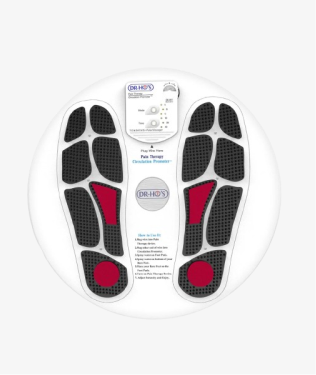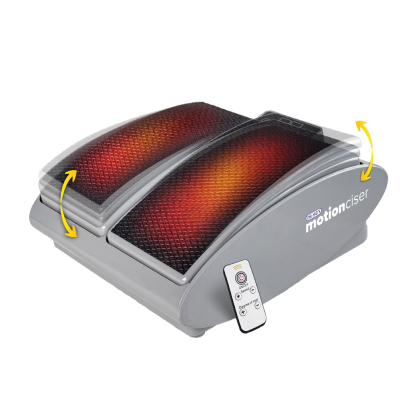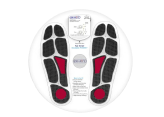 If you suffer from sciatica pain, you know that the symptoms demand to be felt and can often feel debilitating. Engaging in intense physical activity may further aggravate existing discomfort. Yoga, gentle aerobics, and specific stretches, can all improve sciatic nerve pain. Getting relief from the symptoms of sciatic pain may be more acheivable than you think. Below you will find common strategies you can use at-home to manage your Sciatica pain. We also encourage you to opt-in to our free Sciatica Plan, for more detailed information, meal plans, exercises and information for Sciatica sufferers.
If you suffer from sciatica pain, you know that the symptoms demand to be felt and can often feel debilitating. Engaging in intense physical activity may further aggravate existing discomfort. Yoga, gentle aerobics, and specific stretches, can all improve sciatic nerve pain. Getting relief from the symptoms of sciatic pain may be more acheivable than you think. Below you will find common strategies you can use at-home to manage your Sciatica pain. We also encourage you to opt-in to our free Sciatica Plan, for more detailed information, meal plans, exercises and information for Sciatica sufferers.
1. Aerobics for Sciatic Nerve Pain
Aerobics or cardio, pump blood to the heart and deliver oxygen to the muscles. Aerobics speed up the heart rate, improve circulation, and are beneficial for emotional health. Aerobics guard against diabetes, depression, cardiovascular disease, and osteoporosis. A few aerobic activities include:
Low-Intensity Aerobics
- Walking
- Beginner’s yoga
- Swimming
- Household chores (light gardening, mopping, vacuuming)
High-Intensity Aerobics
- Cardio machines
- Pilates
- Spinning
- Running
- Hiking
- Dancing
- Kickboxing
2. At-Home Exercises and Stretches for Sciatica Pain
Kris Wong from the Active Health Centre demonstrates simple at-home stretches and exercises that reduce sciatic nerve pain. Try these morning stretches daily to improve your pain over time.
3. Yoga for Sciatic Nerve Pain
By targeting the muscles in the lower back, buttock, and back of the leg, the adoption of relevant yoga poses can stretch and strengthen the areas of the body that throb with the presence of sciatica. Practicing yoga poses every day can help to flex and stretch the appropriate muscles to promote relaxation and flexibility, while releasing endorphins that naturally reduce your sciatica pain.
Yoga Poses for Sciatica
- Standing hamstring stretch
- Sitting spine stretch
- Knee to shoulder stretch
- Reclining pigeon pose
- Forward pigeon pose
- Sitting pigeon pose
Sciatica Workout Schedule
Use the four-week plan below to engage in stretches, aerobics, and yoga that reduce sciatic nerve pain over time. Start slow and work your way up to participating in daily exercises that will have you feeling energized and comfortable.
Week One Schedule
| Monday | Tuesday | Wednesday | Thursday | Friday | Saturday | Sunday |
| 30 Min High-Intensity Aerobics | 30 Min Morning Stretches | Rest Day | 30 Min Low-Intensity Aerobics and Stretch | 30 Min Morning Stretches | Rest Day | 30 Min Yoga At Home |
Week Two Schedule
| Monday | Tuesday | Wednesday | Thursday | Friday | Saturday | Sunday |
| 30 Min High-Intensity Aerobics | 30 Min Morning Stretches | Rest Day | 30 Min High-Intensity Aerobics and Stretch | 30 Min Morning Stretches | Rest Day | 60 Min Yoga Class |
Week Three Schedule
| Monday | Tuesday | Wednesday | Thursday | Friday | Saturday | Sunday |
| 30 Min Low-Intensity Aerobics and Stretch | 30 Min Morning Stretches | 30 Min Low-Intensity Aerobics and Stretch | 30 Min Morning Stretches | 30 Min Low-Intensity Aerobics and Stretch | 30 Min Low-Intensity Aerobics and Stretch | 60 Min Yoga Class |
Week Four Schedule
| Monday | Tuesday | Wednesday | Thursday | Friday | Saturday | Sunday |
| 30 Min Low-Intensity Aerobics and Stretch | 30 Min Morning Stretches | 60 Min Low-Intensity Aerobics and Stretch | 30 Min Morning Stretches | 30 Min Low-Intensity Aerobics and Stretch | 60 Min Low-Intensity Aerobics and Stretch | 60 Min Yoga Class |
Getting Started
If you’re new to integrating an exercise routine to your life, consult your doctor or physiotherapist before moving from low-intensity to high-intensity workouts. The following are helpful tips to keep in mind as you get started.
Be Patient
Be aware that as a sciatica sufferer it’s common that you will feel tired for the first week of a new program. Energy levels tend to spike over time. Take it slow but stay consistent with your workouts for pain-relieving results.
Be Aware of Pain
If you experience sharp or unbearable pain that is beyond normal, this could be an injury. Avoid further exercise and consult your doctor.
Pace Yourself
Start the recommended exercise with low-intensity aerobics, shorter strength training sessions, and more frequent rest days. As the weeks progress trade in low-intensity for high-intensity, lengthen training sessions, and engage in low-intensity aerobics on rest days.
Get more information on sciatic nerve pain
Download the Free Sciatica Pain Management Plan for more. Discover more detailed information and educational videos by exploring DR-HO’S Living Pain Free content:- Sciatica: This is Everything You Need to Know
- Sciatica Causes: Where is my Sciatica Pain Coming From?
- Sciatica Cure: Is There a Cure for Sciatica?
- Sciatica Exercises: 6 At-Home Exercises for Sciatic Nerve Pain
- Sciatica Pain Relief: 10 At-Home Treatments for Sciatica
- Sciatica Symptoms: This is How it Feels to Have Sciatic Nerve Pain
- Sciatica Treatment: What Can I Do To Ease Sciatica Pain?
- Sciatic Nerve Pain: Physiotherapist Demonstrates 5 Exercises to Beat Sciatic Nerve Pain
 If you suffer from sciatica pain, you know that the symptoms demand to be felt and can often feel debilitating. Engaging in intense physical activity may further aggravate existing discomfort. Yoga, gentle aerobics, and specific stretches, can all improve sciatic nerve pain. Getting relief from the symptoms of sciatic pain may be more acheivable than you think. Below you will find common strategies you can use at-home to manage your Sciatica pain. We also encourage you to opt-in to our free Sciatica Plan, for more detailed information, meal plans, exercises and information for Sciatica sufferers.
If you suffer from sciatica pain, you know that the symptoms demand to be felt and can often feel debilitating. Engaging in intense physical activity may further aggravate existing discomfort. Yoga, gentle aerobics, and specific stretches, can all improve sciatic nerve pain. Getting relief from the symptoms of sciatic pain may be more acheivable than you think. Below you will find common strategies you can use at-home to manage your Sciatica pain. We also encourage you to opt-in to our free Sciatica Plan, for more detailed information, meal plans, exercises and information for Sciatica sufferers.
1. Aerobics for Sciatic Nerve Pain
Aerobics or cardio, pump blood to the heart and deliver oxygen to the muscles. Aerobics speed up the heart rate, improve circulation, and are beneficial for emotional health. Aerobics guard against diabetes, depression, cardiovascular disease, and osteoporosis. A few aerobic activities include:
Low-Intensity Aerobics
- Walking
- Beginner’s yoga
- Swimming
- Household chores (light gardening, mopping, vacuuming)
High-Intensity Aerobics
- Cardio machines
- Pilates
- Spinning
- Running
- Hiking
- Dancing
- Kickboxing
2. At-Home Exercises and Stretches for Sciatica Pain
Kris Wong from the Active Health Centre demonstrates simple at-home stretches and exercises that reduce sciatic nerve pain. Try these morning stretches daily to improve your pain over time.
3. Yoga for Sciatic Nerve Pain
By targeting the muscles in the lower back, buttock, and back of the leg, the adoption of relevant yoga poses can stretch and strengthen the areas of the body that throb with the presence of sciatica. Practicing yoga poses every day can help to flex and stretch the appropriate muscles to promote relaxation and flexibility, while releasing endorphins that naturally reduce your sciatica pain.
Yoga Poses for Sciatica
- Standing hamstring stretch
- Sitting spine stretch
- Knee to shoulder stretch
- Reclining pigeon pose
- Forward pigeon pose
- Sitting pigeon pose
Sciatica Workout Schedule
Use the four-week plan below to engage in stretches, aerobics, and yoga that reduce sciatic nerve pain over time. Start slow and work your way up to participating in daily exercises that will have you feeling energized and comfortable.
Week One Schedule
| Monday | Tuesday | Wednesday | Thursday | Friday | Saturday | Sunday |
| 30 Min High-Intensity Aerobics | 30 Min Morning Stretches | Rest Day | 30 Min Low-Intensity Aerobics and Stretch | 30 Min Morning Stretches | Rest Day | 30 Min Yoga At Home |
Week Two Schedule
| Monday | Tuesday | Wednesday | Thursday | Friday | Saturday | Sunday |
| 30 Min High-Intensity Aerobics | 30 Min Morning Stretches | Rest Day | 30 Min High-Intensity Aerobics and Stretch | 30 Min Morning Stretches | Rest Day | 60 Min Yoga Class |
Week Three Schedule
| Monday | Tuesday | Wednesday | Thursday | Friday | Saturday | Sunday |
| 30 Min Low-Intensity Aerobics and Stretch | 30 Min Morning Stretches | 30 Min Low-Intensity Aerobics and Stretch | 30 Min Morning Stretches | 30 Min Low-Intensity Aerobics and Stretch | 30 Min Low-Intensity Aerobics and Stretch | 60 Min Yoga Class |
Week Four Schedule
| Monday | Tuesday | Wednesday | Thursday | Friday | Saturday | Sunday |
| 30 Min Low-Intensity Aerobics and Stretch | 30 Min Morning Stretches | 60 Min Low-Intensity Aerobics and Stretch | 30 Min Morning Stretches | 30 Min Low-Intensity Aerobics and Stretch | 60 Min Low-Intensity Aerobics and Stretch | 60 Min Yoga Class |
Getting Started
If you’re new to integrating an exercise routine to your life, consult your doctor or physiotherapist before moving from low-intensity to high-intensity workouts. The following are helpful tips to keep in mind as you get started.
Be Patient
Be aware that as a sciatica sufferer it’s common that you will feel tired for the first week of a new program. Energy levels tend to spike over time. Take it slow but stay consistent with your workouts for pain-relieving results.
Be Aware of Pain
If you experience sharp or unbearable pain that is beyond normal, this could be an injury. Avoid further exercise and consult your doctor.
Pace Yourself
Start the recommended exercise with low-intensity aerobics, shorter strength training sessions, and more frequent rest days. As the weeks progress trade in low-intensity for high-intensity, lengthen training sessions, and engage in low-intensity aerobics on rest days.
Get more information on sciatic nerve pain
Download the Free Sciatica Pain Management Plan for more. Discover more detailed information and educational videos by exploring DR-HO’S Living Pain Free content:- Sciatica: This is Everything You Need to Know
- Sciatica Causes: Where is my Sciatica Pain Coming From?
- Sciatica Cure: Is There a Cure for Sciatica?
- Sciatica Exercises: 6 At-Home Exercises for Sciatic Nerve Pain
- Sciatica Pain Relief: 10 At-Home Treatments for Sciatica
- Sciatica Symptoms: This is How it Feels to Have Sciatic Nerve Pain
- Sciatica Treatment: What Can I Do To Ease Sciatica Pain?
- Sciatic Nerve Pain: Physiotherapist Demonstrates 5 Exercises to Beat Sciatic Nerve Pain










![The Ultimate Sciatica Workout Plan — Aerobics, Yoga, Stretches, and More! [Updated 2021]](http://drhonow.com/cdn/shop/articles/martin-barak-353522_9a1853ca-5b86-4b76-a4a7-b030625d5e54_large.jpg?v=1684507927)







